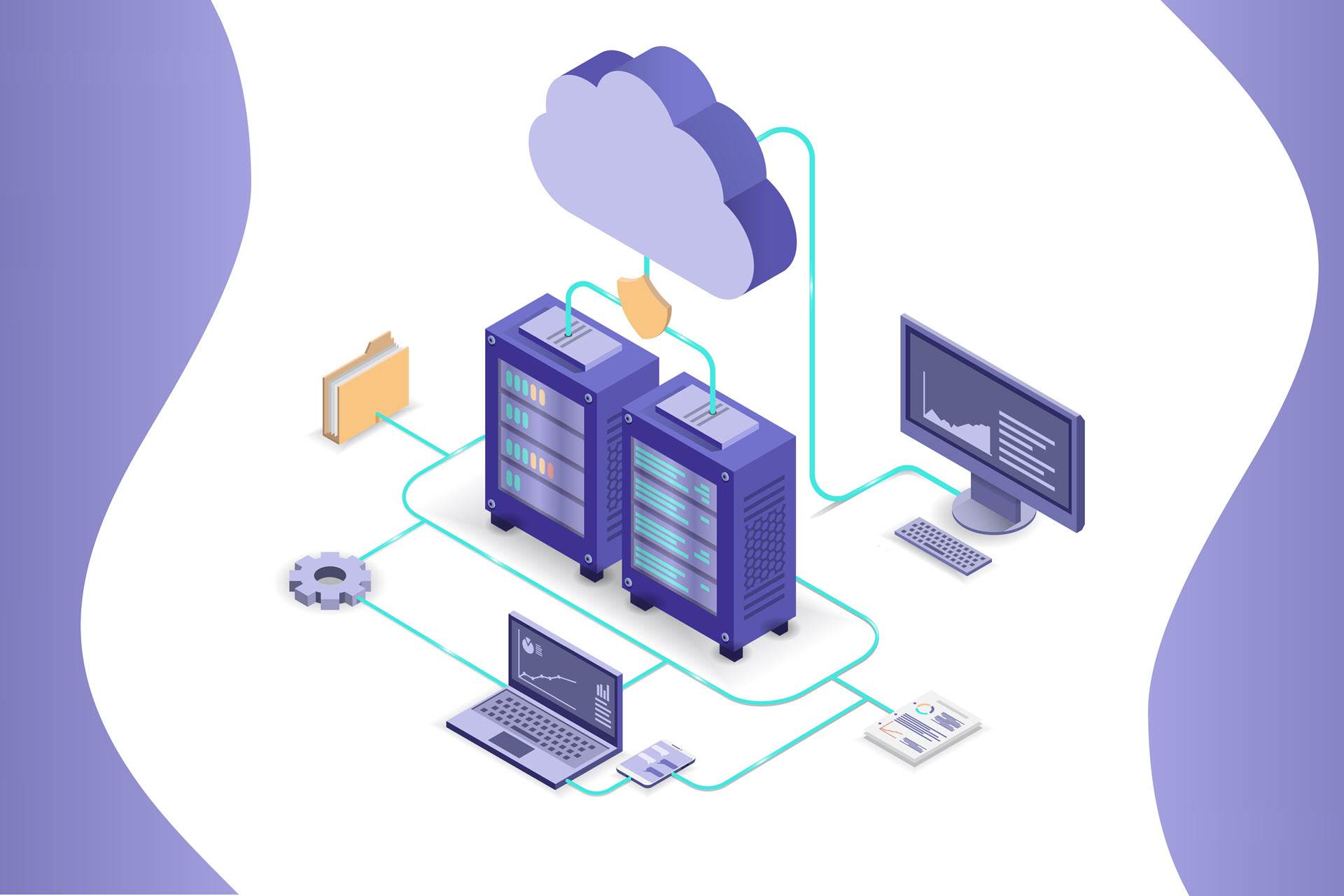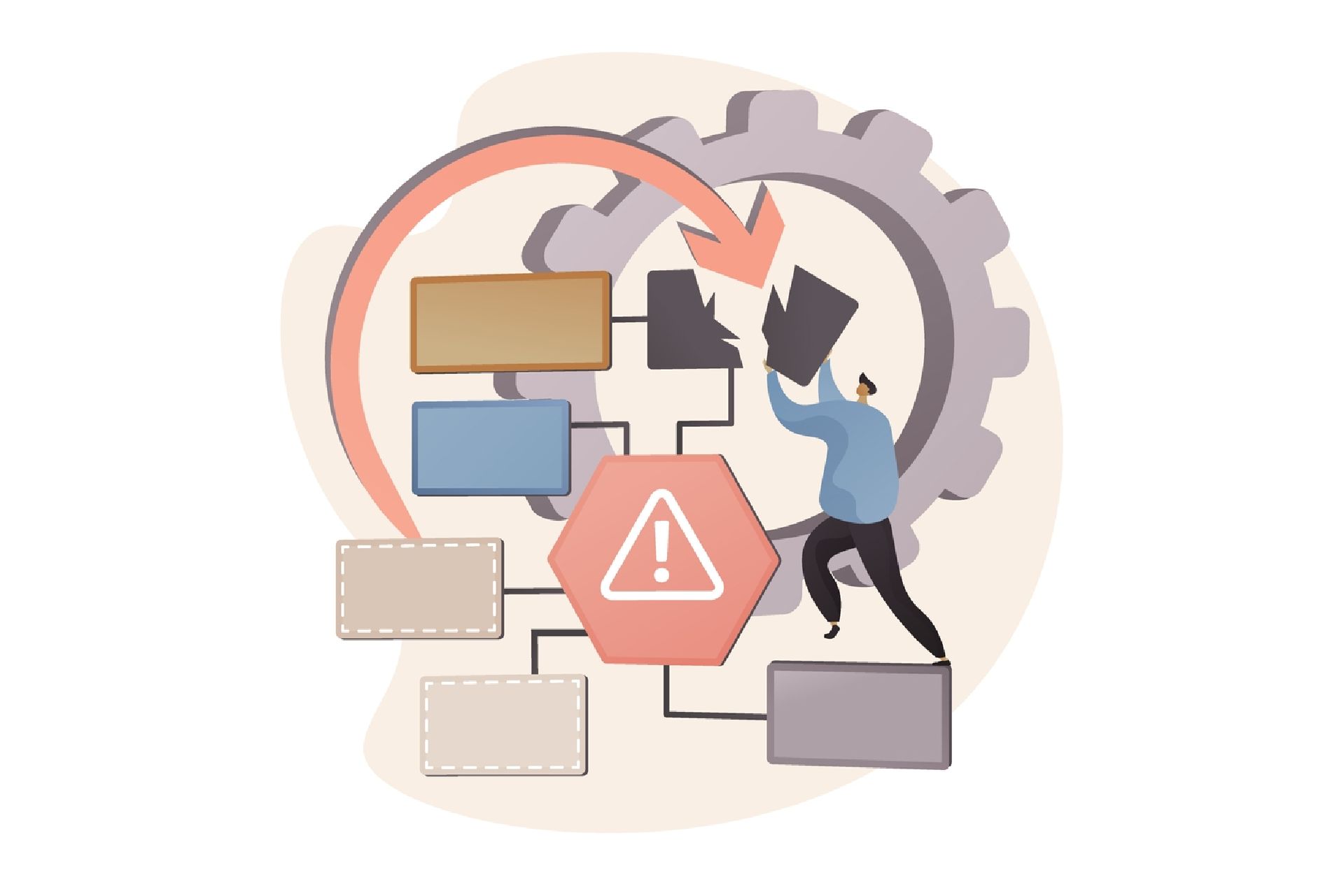Imagine a small company juggling ten physical servers, each dedicated to a single task like running applications, storing data, and managing network traffic. Each server may utilize only 20% of its computing power most of the time, yet it always consumes the same amount of resources.
This scenario is all too common for businesses burdened by inefficient server management. But what if there was a way to merge these servers into powerful virtual machines, saving money and maximizing resource utilization?
This article will explore the intricacies of server consolidation and how you can use it to unleash the true power of your IT infrastructure.
What Is Server Consolidation?
Server consolidation involves the migration of workloads from multiple underutilized machines to fewer, more powerful ones. Consolidated servers run the same workloads but more efficiently, thanks to virtualization.
Virtualization enables you to create multiple virtual machines (VMs), each with its own operating system and applications, on a single physical machine (typically a blade server).
Server Consolidation Architecture
There are three main components of a consolidated server.
Physical Servers
Physical servers are the hardware that runs the workloads. They typically consist of CPU, memory, storage, and network adapters.
In a consolidated environment, physical servers are typically high-performance machines capable of hosting multiple VMs.
Virtualization Software
Virtualization software is the layer that connects the physical and virtual servers. It creates VMs on the physical server, each with its own operating system and resources. Virtualization allows multiple independent workloads to run on the same physical server.
There are two main types of virtualization technologies:
- Hypervisor. A hypervisor is software that resides directly on hardware and allows multiple VMs to run concurrently. It consumes resources by itself, so choosing a lightweight hypervisor and optimizing its configuration is vital for maximizing performance. Examples of hypervisors include VMware vSphere and Microsoft Hyper-V.
- Containerization. Containerization is a virtualization technology that allows multiple applications to share the operating system kernel. Examples of containerization technologies include Docker and Kubernetes.
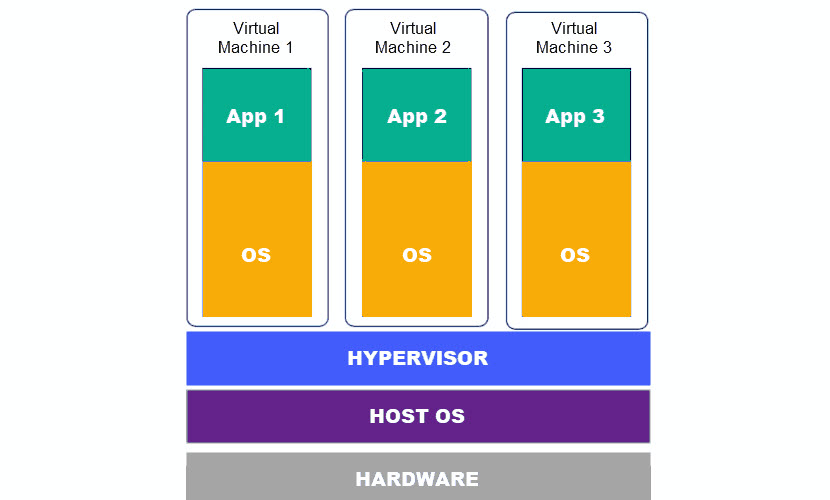
Discover the differences between containers and virtual machines (VMs).
Virtual Servers
Virtual servers are software-based environments that emulate the functionality of physical servers. They achieve this by partitioning the resources of a physical server into isolated units.
For most purposes, virtual servers behave like physical servers. They offer the same functionality and can run the same operating systems and applications.
Server Consolidation Types
There are three types of server consolidation: physical, logical, and rationalized.
- Physical consolidation tackles underperformance by replacing multiple low-powered servers with fewer high-powered ones.
- Logical consolidation is the process of installing virtual machines onto physical servers.
- Rationalized consolidation involves analyzing workload requirements and hardware capabilities to migrate workloads to the most appropriate platform.
There is no universally prescribed order for server consolidation. Logical consolidation is the easiest to implement and requires minimal changes to your existing infrastructure. Once you're comfortable with virtualization, consider replacing low-performance machines.
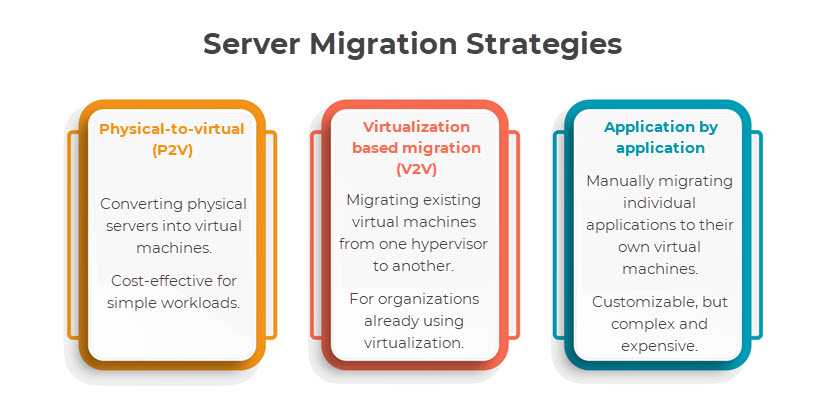
Server Consolidation Benefits
Server consolidation solves several challenges of IT infrastructure management.
- Reduces IT costs. Running fewer servers means expending less energy for power and cooling, which account for up to 40% of the total energy consumption of a data center.
- Simplifies management. Consolidation streamlines IT operations, reducing the time and effort spent on server management.
- Increases agility and scalability. You can provision and deploy virtual servers significantly faster than bare metal. This agility allows you to quickly scale resources on demand and adapt to changing business needs.
- Improved disaster recovery. Virtual servers are much easier to back up and restore, which is immensely useful for disaster recovery.
- Reduced environmental impact. Consolidation contributes to a greener IT infrastructure by reducing energy consumption and e-waste.
Read phoenixNAP CEO’s article on data center sustainability to find out why it's essential and how we can achieve it.

Things to Consider Before Consolidating Your Servers
While server consolidation offers significant benefits, it is not without its challenges.
Resource Distribution
Inefficient resource sharing among VMs leads to performance bottlenecks. Overprovisioning CPU, memory, or storage exacerbates these issues, causing slowdowns and instability, especially during peak load. Furthermore, the ease of creating VMs often leads to uncontrolled growth and sprawl, which makes resource management more challenging.
To solve this issue, decommission or consolidate orphaned or underutilized VMs so they don't consume resources unnecessarily.
Security
Resource sharing among VMs increases the attack surface and potentially compromises multiple VMs if one is attacked. By lateral movement, hackers leverage vulnerabilities in one VM to access another on the same physical server.
Network segmentation and secure configuration of VMs and the hypervisor are crucial to mitigating this issue.
Compliance
Maintaining compliance with data security and privacy laws is more complex with virtual servers. This is particularly true if your organization is subject to laws like HIPAA, PCI DSS, and GDPR.
For example, HIPAA's data residency requirements mandate that the hospital not store protected health information (PHI) in any virtual environment outside specific geographic boundaries, which rules out most public cloud storage. Additionally, they must protect PHI with identity and access management systems and encryption.
Complexity
Server consolidation, data migration, and VM management require specialized skills and tools. You will need significant investments for a successful transition.
For example, identifying the root cause of bottlenecks in a consolidated infrastructure requires advanced monitoring tools and expertise. Because VMs share physical resources, pinpointing which one has performance issues is much more complex than with a traditional server setup.
Furthermore, VM monitoring tools generate vast amounts of data. This data can overwhelm even experienced IT teams tasked with interpreting metrics and identifying meaningful trends.
If you aren't up to the challenge, consider partnering with phoenixNAP. Our team has the knowledge and experience to implement a cloud computing solution tailored to your needs.
We have a global network of data centers and a growing community of businesses that trust us to power their digital future.
Contact us today to discuss your requirements.
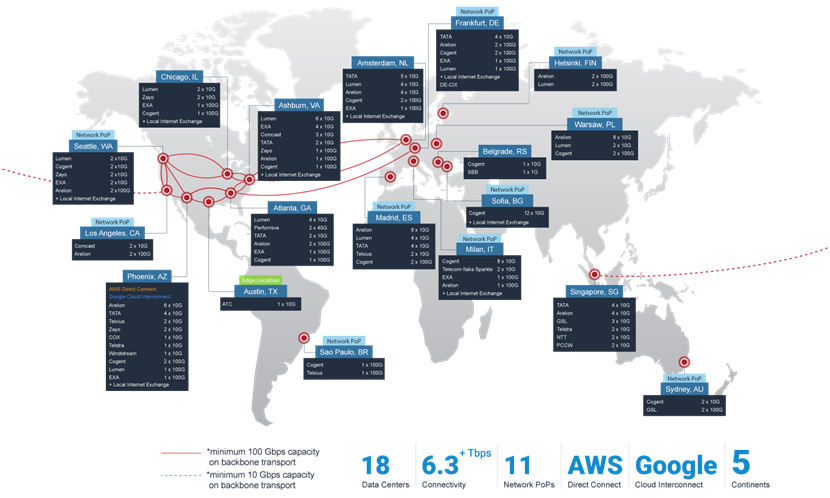
How to Consolidate Your Servers?
Here's a step-by-step guide on how to consolidate your IT infrastructure.
1. Assess Your Current Environment
- Analyze usage patterns and resource utilization. Dive deep into each server's workload and resource consumption. Identify underutilized or over-utilized servers to understand potential consolidation opportunities.
- Identify bottlenecks. Identify servers experiencing performance bottlenecks that impact application responsiveness and user experience. Prioritize the consolidation of these servers.
- Classify workloads. Categorize servers based on their workloads to determine their compatibility. Servers running similar applications or functions are good candidates for efficient merging.
2. Identify and Group Servers
- Leverage automation tools. Employ cloud management and automation tools to streamline workload analysis and server grouping.
- Consider resource compatibility. Ensure the target server or cluster has sufficient resources to handle the combined workloads effectively.
- Prioritize business-critical applications. Analyze the impact of consolidation on critical applications and prioritize their placement on dedicated or high-performance servers for guaranteed uptime and performance.
3. Plan the Consolidation
- Virtualization vs. physical consolidation. Choose between physical or logical consolidation depending on resource requirements and budget constraints.
- Cloud management platforms. Consider leveraging cloud management platforms to automate workload migration and server provisioning.
- Resource scaling strategy. Define a clear strategy for dynamically scaling resources as workload demands fluctuate.
4. Test and Validate
- Pre-migration testing. Perform comprehensive testing in a trial environment to validate the plan and identify potential issues before migrating workloads to the consolidated server.
- Performance monitoring tools. Use server monitoring tools to track the consolidated server's behavior and ensure it's running smoothly after migration.
- Contingency plans. Establish contingency plans to address issues during or after consolidation to ensure business continuity.
5. Consolidate
- Migrate workloads. Transfer the previously identified workloads to the consolidated server or cluster.
- Shutdown and decommissioning. Once migrated, shut down and decommission the old servers to reduce energy consumption and maintenance costs.
- Post-migration verification. Verify the functionality of migrated applications and services on the consolidated server. Ensure there is no performance degradation or service disruptions.
6. Monitor and Maintain
- Continuous performance monitoring. Proactively monitor the consolidated server's performance, resource utilization, and application health to identify potential issues early.
- Regular maintenance tasks. Perform regular maintenance like software updates, security patching, and hardware upgrades to ensure the consolidated servers run smoothly and securely.
- Resource optimization. Regularly review and adjust resource allocation to optimize performance and prevent bottlenecks.
7. Optimize the Environment
- Workload rebalancing. Periodically rebalance workloads across the consolidated server or cluster to ensure optimal resource utilization and minimize bottlenecks.
- Right-sizing resources. Continuously assess resource needs and adjust server configurations to ensure cost efficiency without compromising performance.

The Power of Consolidation
Server sprawl, once a hallmark of IT infrastructure, is rapidly fading into the past thanks to virtualization. This technology allows you to operate hundreds of virtual servers with a physical footprint of just a few, significantly reducing hardware costs and energy consumption.
However, these benefits are only realized if you don't replace server sprawl with VM sprawl. The ease of spinning up new VMs can easily overwhelm your system administrators, creating conditions for overprovisioning and other inefficiencies.
Proper server consolidation goes beyond reducing hardware. It minimizes the number of operating systems and maximizes your efficiency.

